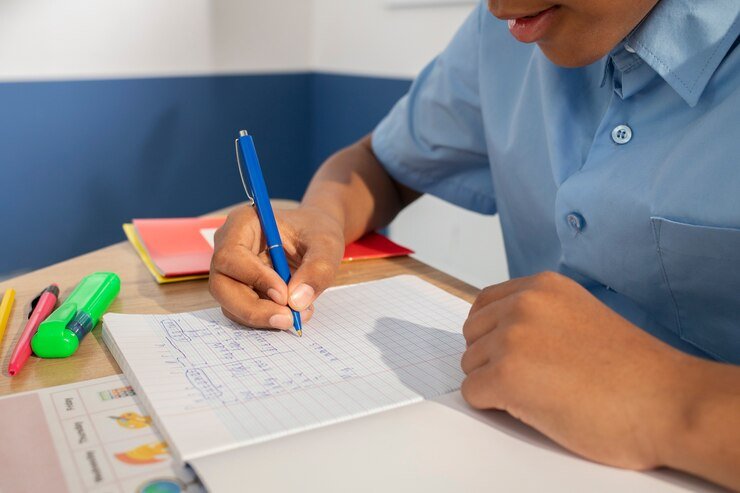In the world of soccer, the role of the goalkeeper is unique and demanding, requiring a distinct set of skills that can often determine the outcome of a game. To ensure that goalkeepers meet the high standards expected of them, the Keeper Standard Test has emerged as a crucial tool for evaluating and benchmarking their abilities. This test is designed to assess various aspects of a goalkeeper’s performance, from their reflexes and agility to their decision-making and composure under pressure.
This article provides an in-depth look at the Keeper Standard Test, its components, and its significance in the development and evaluation of soccer goalkeepers.
What is the Keeper Standard Test?
The Keeper Standard Test is a comprehensive assessment designed to measure the core skills and competencies required for a soccer goalkeeper. Unlike other positions on the field, goalkeepers must excel in areas such as shot-stopping, distribution, and communication, making a specialized evaluation essential.
The test is typically used by coaches, scouts, and academies to evaluate goalkeepers at various levels, from youth players to professionals. It helps identify strengths and weaknesses, providing valuable feedback that can be used to guide training and development.
Components of the Keeper Standard Test
The Keeper Standard Test is divided into several key components, each targeting a different aspect of a goalkeeper’s skill set. Here’s a breakdown of the most important elements:
**1. Reflexes and Reaction Time
Goalkeepers need lightning-fast reflexes to respond to shots on goal, particularly in close-range situations. The test includes exercises that simulate real-game scenarios where the goalkeeper must react quickly to save shots from various angles and distances.
**2. Agility and Footwork
Agility is critical for goalkeepers, who must move quickly and efficiently across the goal line. The test assesses the goalkeeper’s footwork, including lateral movement, diving, and recovery. Drills often involve quick changes in direction and explosive movements to ensure the goalkeeper can cover all areas of the goal.
**3. Shot-Stopping Ability
This component focuses on the goalkeeper’s ability to make saves. It includes both ground shots and aerial shots, requiring the goalkeeper to demonstrate their catching, punching, and parrying skills. The test may also assess the goalkeeper’s ability to handle high-pressure situations, such as saving penalty kicks.
**4. Distribution and Ball Handling
A modern goalkeeper is expected to contribute to the team’s build-up play. The Keeper Standard Test evaluates a goalkeeper’s ability to distribute the ball accurately, whether by throwing, kicking, or rolling it to a teammate. This part of the test assesses both short and long-range distribution and the ability to play under pressure.
**5. Positioning and Decision-Making
Proper positioning is essential for a goalkeeper to make effective saves and reduce the opponent’s scoring opportunities. The test includes scenarios where the goalkeeper must demonstrate their understanding of positioning relative to the ball, the goal, and the attacking players. Decision-making is also assessed, particularly in situations requiring the goalkeeper to decide whether to stay on their line, come out to challenge an attacker, or intercept a cross.
**6. Communication and Leadership
Goalkeepers are often the leaders of the defense, responsible for organizing the backline and communicating with teammates. The Keeper Standard Test evaluates a goalkeeper’s ability to communicate clearly and effectively during the game, including giving instructions and calling for the ball.
The Importance of the Keeper Standard Test
The Keeper Standard Test plays a crucial role in the development and evaluation of goalkeepers for several reasons:
**1. Benchmarking Performance
The test provides a standardized way to measure a goalkeeper’s abilities, allowing coaches and scouts to compare players consistently. By establishing benchmarks, the test helps identify which goalkeepers meet or exceed the standards required for various levels of competition.
**2. Identifying Areas for Improvement
By breaking down the goalkeeper’s performance into specific components, the Keeper Standard Test highlights areas where the player excels and where they need to improve. This targeted feedback is invaluable for developing personalized training programs that address a goalkeeper’s weaknesses.
**3. Building Confidence
Performing well on the Keeper Standard Test can boost a goalkeeper’s confidence, knowing they have the skills required to succeed at their level. Confidence is key for goalkeepers, who must remain composed and decisive under pressure.
**4. Scouting and Recruitment
For scouts and recruiters, the Keeper Standard Test offers an objective way to assess potential talent. It allows them to make informed decisions when selecting goalkeepers for teams, academies, or professional contracts.
**5. Tracking Progress
The Keeper Standard Test can be repeated over time, allowing goalkeepers to track their progress and see how their skills have improved with training. This longitudinal data is useful for both players and coaches to evaluate the effectiveness of their development strategies.
How to Prepare for the Keeper Standard Test
Preparing for the Keeper Standard Test requires focused training that addresses all the components of the test. Here are some tips for goalkeepers looking to excel:
**1. Work on Reaction Drills
Incorporate reaction drills into your training routine, such as facing unexpected shots from close range or using reaction balls to improve reflexes. The faster you can react, the better you’ll perform in high-pressure situations.
**2. Improve Footwork and Agility
Use agility ladders, cones, and hurdles to enhance your footwork and lateral movement. Practicing diving techniques and quick recovery drills will help you cover the goal more effectively.
**3. Practice Shot-Stopping Techniques
Regularly practice saving shots from different angles, distances, and heights. Focus on catching, parrying, and punching techniques, and don’t forget to practice under game-like pressure.
**4. Enhance Ball Distribution Skills
Work on your ability to distribute the ball accurately with both hands and feet. Practice different types of distribution, including rolling the ball out to defenders, long throws, and goal kicks that reach midfield.
**5. Study Positioning
Watch game footage to understand proper positioning in various scenarios. Practice positioning drills that simulate game situations, such as one-on-one challenges or defending against crosses.
**6. Communicate Effectively
During training sessions, make it a habit to communicate with your teammates. Practice calling for the ball, organizing the defense, and giving instructions to improve your leadership skills on the field.
Conclusion: The Keeper Standard Test as a Tool for Excellence
The Keeper Standard Test is an invaluable tool for both goalkeepers and coaches, providing a clear and objective way to assess the skills necessary for success in this demanding position. By breaking down the complex role of a goalkeeper into measurable components, the test helps players identify their strengths and areas for improvement, guiding them toward their full potential.
Whether you’re an aspiring goalkeeper looking to improve or a coach seeking to evaluate and develop talent, the Keeper Standard Test offers a comprehensive framework for achieving excellence in one of soccer’s most critical roles.
FAQs
What does the Keeper Standard Test measure?
The Keeper Standard Test measures a goalkeeper’s skills in areas such as reflexes, agility, shot-stopping, ball distribution, positioning, decision-making, and communication.
How can I improve my performance on the Keeper Standard Test?
To improve, focus on specific drills that enhance your reflexes, agility, shot-stopping abilities, and communication skills. Regular practice and studying game footage can also help.
Is the Keeper Standard Test used at all levels of soccer?
Yes, the Keeper Standard Test is used at various levels, from youth soccer to professional leagues, to evaluate and develop goalkeepers.
Can the Keeper Standard Test be used to track progress over time?
Absolutely. The test can be repeated periodically to track a goalkeeper’s development and the effectiveness of their training regimen.
Why is communication important in the Keeper Standard Test?
Communication is key for goalkeepers because they often organize the defense and give instructions during the game. Effective communication can prevent goals and improve team coordination.
What role does positioning play in the Keeper Standard Test?
Proper positioning is crucial for making saves and reducing the opponent’s scoring chances. The test assesses a goalkeeper’s ability to position themselves correctly relative to the ball, goal, and attacking players.











